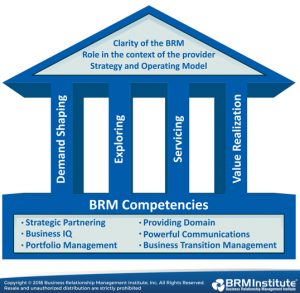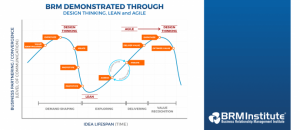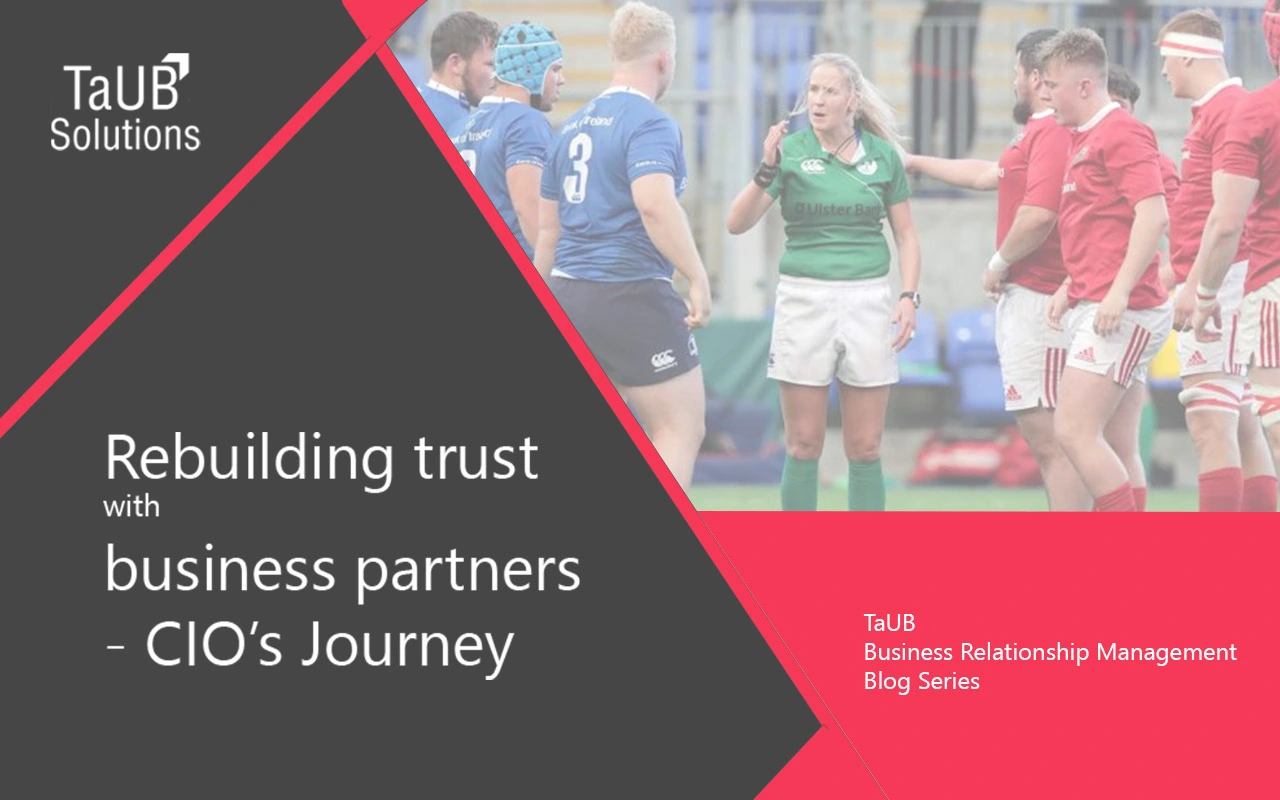Rebuilding trust with Business Partners – CIO’s Journey
The CIO, had a vision: his primary objective is to deliver value to the business and he wanted to extend awareness of IT to become more empathetic to the needs of its business partners and become a strategic partner.
But there were challenges across the enterprise it was frustrating and it was a hindrance to implement CIO’s vision
Challenges across Enterprises
The business units within the organisation operated with “silo” mentality and us vs them mindset was prevailing across the organisation. They do not promote the all-important aspect of effective collaboration, nor a shared strategy within organizations
One of the business leaders faced operational pain points and inefficiency, yet had few resources in IT on which they could rely. It was frustrating. Meanwhile, IT had only a basic understanding of these business functions’ goals or strategies, meaning it bore no empathy for the impact of those pain points.
Some of the business leaders who oversee other business functions felt entirely disconnected from the capabilities offered by IT. Even worse, there was little to no trust between business functions. They would ask their own business function to find potential solutions to problems and present them to IT for implementation. The intent was to be a proactive, ‘good’ business partner, but the results almost always fell short. Solutions felt more like workarounds and sometimes caused as many problems as they solved.
The CIO knew he couldn’t do this on his own. The BRM team was born. BRM team help heal the relationship division, close the communication chasm and ensure that IT delivers business value.
The Business Relationship Management team allowed for regular daily interaction with the business partners, resulting in the following benefits, among others:
- Stronger relationships based on trust and confidence built over time
- A more in-depth understanding of business operations and issues
- Keener insight into market influences leading to business strategy
- Developing the 5-year strategic roadmap and detailing business area mini-roadmaps.
- They own the value-recognition approach and foster collaboration, advocacy, and partnering to improve the business/IT relationship.
- Reducing silos and converging cross-team resources
- Driving shared ownership of successes and failures
“In many organizations, BRMs are forced to do a balancing act to deliver value, as different business disciplines have varied expectations of what drives value.”
Different business disciplines have varied expectations of what drives value. Value truly is in the eye of the beholder, and it is up to the BRM to have 20/20 vision, providing clarity on how value will be discovered, delivered, and harvested.
BRMs play a significant role in facilitating business value discovery, achievement, and harvesting.
“Discovering Value — Delivering Value – Harvesting Value”
The results: Through Collaboration and Open Communication
BRM has been integral to bridge the gap between Business and IT. The tangible outcome of building the bridge is the beginning of a business capability roadmap for the organization, which was made possible only by IT’s stronger understanding of the goals and strategy of the business function.
All IT colleagues now have a broader and deeper understanding of IT’s business partners within the organization—specifically, empathy for the complex work our business partners accomplish every day.
By Incorporating BRM’s Core Principles of Demand Shaping, Exploring, Delivering, and Value Realization into the business development the enterprise established a solid foundation to grow business in a manageable way
 Demand Shaping – optimizing business value, meaning that low-value demand is suppressed while higher-value demand is stimulated.
Demand Shaping – optimizing business value, meaning that low-value demand is suppressed while higher-value demand is stimulated.
Exploring – identification of business value initiatives that will become part of business partners’ portfolio of services, capabilities, and products
Servicing – It ensures that engagement between business and its business partners translates demand into effective supply requirements. Delivering facilitates business strategy, business capability road mapping, and portfolio and program management.”
Value Realization – This process provides stakeholders with insights into the results of business change and initiatives.
In eternal pursuit of value delivery, the BRM ties the methodologies of Design Thinking, Lean, and Agile together. Incorporating BRM into your organization’s foundational operations promotes collaboration and shared strategy by purposefully weaving the methodologies together to evolve a truly value-driven business.
 Ready to Make a Difference?
Ready to Make a Difference?






